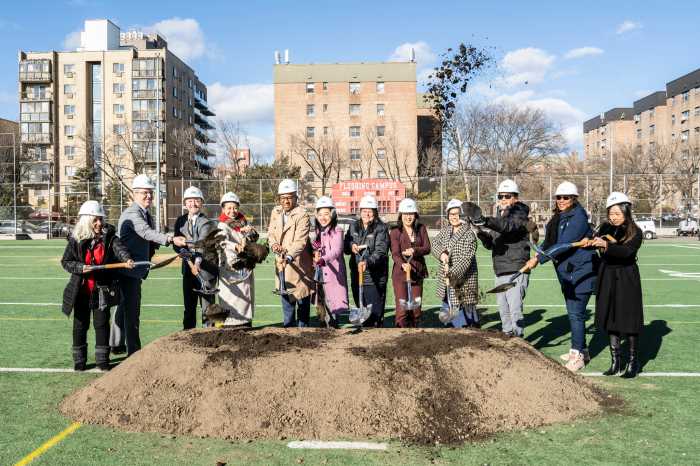Flushing and John Bowne High Schools are among 69 public academic institutions across the city that will be joining the Department of Education’s (DOE) “Community Schools” initiative when the new school year starts this September.
Each of the new “Community Schools” will partner with various community based organizations (CBO) to better address the needs of its students through expanded learning programs and other initiatives designed to boost family engagement and promote students’ social and emotional development.
The designation comes with a major funding commitment through the 21st Century Community Learning Center, as the 69 schools will receive a combined $25.5 million in annual grants for up to five years.
On Thursday, May 11, Mayor Bill de Blasio and Schools Chancellor Carmen Fariña stressed that the Community Schools program is an investment designed to bring a more equal and higher quality of education for all students while also going beyond the classroom to ensure that every student and their families have what they need to live full and healthy lives.
“Equity and Excellence is about evening the playing field for our students, and Community Schools help to do just that,” said de Blasio. “To reach success in their classes, our students often require some extra support outside the classroom. This expansion allows us to provide additional after school activities, mental health counseling, enhanced family engagement, and so much more.”
“It’s essential that we invest in the whole child, and through the Community School model, we are bringing additional social emotional supports, mental health services, and deepening family ties,” Fariña added. “Schools are anchors for the entire community, and by embedding high quality community based organizations into schools, we can meet the needs of students and families. With this expansion, these game-changing resources will benefit more than 108,000 students in all five boroughs.”
Flushing and John Bowne High Schools are perhaps the most prominent — and most crowded — Queens academic institutions slated to become Community Schools.
With 3,566 students, John Bowne currently has a four-year graduation rate of 74%, but is struggling to have its students ready for college and the workforce, according to the DOE’s School Quality Snapshot for 2015-16. Just 33% of graduates met CUNY college-readiness standards, and 54% of all of its high school graduates enrolled in a college or got a job within 6 months of receiving their diplomas.
John Bowne has come under fire in recent months for a number of violent incidents, including the stabbing of a student and an assault on a school safety agent monitoring a metal detector.
The situation is slightly worse at Flushing High School, which has 1,812 students and a four-year graduation rate of 63%. Its School Quality Snapshot for 2015-16 found that only 18% of graduates met CUNY college-readiness standards and 44% of all graduates enrolled in college or got a job shortly after graduation.
Borough-wide, 43% of Queens public high school graduates meet college-readiness standards, and 58% of high school graduates enrolled in college or got a job within 6 months of graduating.
As Community Schools, John Bowne and Flushing would have “expanded learning time, health and wellness services, enhanced family and community engagement and targeted attendance improvement strategies,” according to the Mayor’s office. Each Community School will have a dedicated director, shared leadership and greater data tracking abilities to combat negative school trends such as truancy. Community Schools may also offer services including health centers, vision screenings, food pantries and adult education.
One local lawmaker, state Senator Toby Ann Stavisky, said she’s excited to see what kind of improvements the Community Schools program will bring to both high schools as well as J.H.S. 189 in Flushing, which was also added to the program.
“Supporting our schools is essential in providing a well-rounded education for our children,” Stavisky said. “The Community Schools program operates with the understanding that improving struggling schools requires a holistic approach. It is more than just throwing money into equipment. It is also about engaging the community, health and wellness services and partnering with parents.”
Click here to learn more about the Community Schools initiative.





































